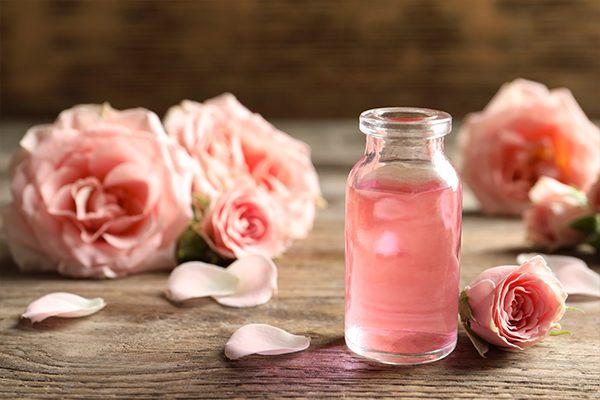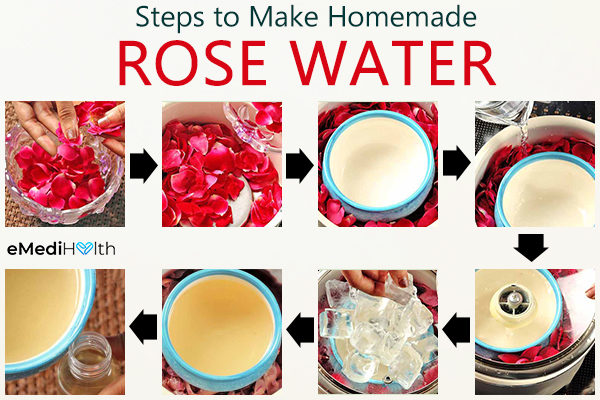In this article:
Roses are often considered the epitome of love, beauty, and all things nice. But there is much more to this sweetly aromatic flower than its ornamental appeal. The rose water extracted from rose petals is a widely popular beauty product whose effectiveness has stood the test of time.

Be it your mother or your grandmother, women across generations will vouch for the skin benefits of rose water. Rich in chemicals such as flavonoids that fight skin inflammation and oxidative stress, it is a commonly used ingredient in cosmetic and skincare products as well as multiple beauty remedies.
Extraction of Rose Water via Distillation
Rose water has emerged as one of the most sought-after beauty essentials, so much so that the market is often unable to meet its demand. The main reason is the ingredient is employed by various industries for a whole range of different purposes.
The supply shortage is often compensated by introducing inferior products for the said hydrosol that have either been watered down or contain synthetic essences or essential oils of other plants. But you can easily make good-quality rose water at home to avoid the risk of unwanted adulterants.
Roses have a distinctive flavor and several medicinal properties that become concentrated in the essential water produced during the steam distillation of its petals. Distillation involves selectively heating and then cooling a liquid to separate its key components.
Hydrodistillation of rose petals enables you to extract the most purified and concentrated forms of various plant compounds, and rose water is one such by-product.
When the rose petals are boiled in water, the vapors released from the mixture are subsequently cooled down, and the aqueous distillate left behind is referred to as rose water, or golab. (1)
Benefits of Rose Water

The skin-enhancing and rejuvenating virtues of rose water are not only backed by preliminary research but are also evident in the widespread use of this ingredient in anecdotal home remedies passed down across generations.
Here are some key benefits of rose water:
- Infused with the characteristic smell of roses, this hydrosol is commonly used in the manufacture of perfumes, air fresheners, and aromatherapy agents.
- Rose water is also used as a flavoring agent in home cooking and in the food industry.
- Rose water is also a regular feature in a lot of religious ceremonies, particularly in Europe and Asia.
- A lot of cosmetic products contain rose water, but the hydrosol is no less than a cosmetic product itself. It is replete with anthocyanins, polyphenols, and flavonoids, all of which exude strong antioxidant properties that help fight free radical damage and curb skin inflammation, two of the most common culprits behind skin problems. (2)
- This therapeutic potion is extremely gentle on the skin and gives off a refreshing smell that can invigorate your senses. You can directly spritz it on your skin as a face or body mist, especially during the summer, to cool and soothe the skin. You can safely reapply it multiple times without irritating your skin.
- Unlike regular perfumes or sprays, rose water is free of alcohol and other harsh chemicals that normally irritate your skin. Thus, you can safely reapply it multiple times even if you have sensitive skin without worrying about the adverse reactions associated with regular sprays and deodorants.
- This mild and fragrant liquid also works as a natural toner that can help balance the pH of your skin.
- One cannot deny the sensory appeal of this fragrance, which is both stimulating and relaxing. It helps enliven your dull spirits by adding a zing of freshness and also helps calm your mind. Thus, rose water also makes for a revitalizing bath oil. (3)
- Lastly, you can use rose water as a skin-friendly makeup remover. It will draw out the impurities from your skin pores without irritating or drying out your skin. This liquid is also known to exhibit a mild astringent effect that can help shrink your pores.
Note: People with a sensitive nose or those with active pollen allergies are advised to take special precautions when using rose products. If you experience any discomfort or a flare-up of your allergy symptoms after using rose water, discontinue its use immediately.
Given that rose water may contain pollen particles, spraying it on your face can trigger a respiratory reaction that primarily affects the upper airways. This reaction could lead to breathing difficulty and proper medical care should be sought.
To rule out any adverse skin or respiratory reactions, it is recommended that you patch test the product on the underside of your arm before using it anywhere else on your body, especially on your face. Those with an overactive sense of smell should also do this to see if they can tolerate the rosy aroma.
Make Your Own Rose Water

Ingredients:
- Petals from 4–5 fresh roses
- 250 ml distilled water
- 10–15 ice cubes
- A boiling pot or a deep saucepan
- A stand
- A heat-resistant bowl (to be placed inside the boiling pot for collecting the rose water)
- A bottle for storing the end product
Directions:

- Wash the roses and pluck their petals off.
- Place your boiling pot on the stove and place an appropriately sized metal stand inside it.
- Drop the rose petals in the pot and push them to the sides of the pot.
- Place a bowl on the stand.
- Pour just enough water into the pot to submerge the rose petals.
- Cover the pot with its lid upside down and bring the solution to a boil.
- Place ice cubes on top of the inverted lid, and let the solution simmer on medium-low flame for 20–30 minutes.
- When the ice melts, replace it with more ice cubes to enable the condensation of the steam to form rose water, which will trickle down from the underside of the lid straight into the bowl placed on top of the stand.
- Remove the lid after 20–30 minutes to check if the rose petals have turned white, in which case you must turn off the heat, remove the bowl from the pot, and allow it to cool.
- Transfer the rose water that has collected inside the bowl into a sterile bottle.
Tips to Keep in Mind

- The reason for using a metal stand to hold the liquid-collection bowl is to keep it at a distance from the pot. If the bowl with the rose water comes in contact with the heated pot, the liquid inside it will evaporate or dry up. If you do not have a metal stand handy, you can use a ceramic bowl in its place.
- The size and design of the bowl to be placed inside the pot should be such that it allows the inverted lid to cover the pot properly.
- Rinse off any dirt or grime from the petals before putting them into the utensil, or else you will end up boiling the impurities as well, which can contaminate your final product.
- The normal shelf life of homemade rose water is about 10 days, provided you store it in a cool place. Ideally, you should stick the bottle in your refrigerator to preserve the therapeutic efficacy of the rose water.
Final Word
A lot of people reduce rose water to perfumed water, but it has much more to offer than just its flowery smell. No doubt, the fragrance is one of its primary charms and accounts for its widespread use in aromatherapy. This gentle flower extract can help hydrate, soothe, and cleanse your skin without irritating or damaging it.
It is completely devoid of any chemicals and relies solely on the natural healing effects of antioxidants to improve your skin condition.
- Was this article helpful?
- YES, THANKS!NOT REALLY


